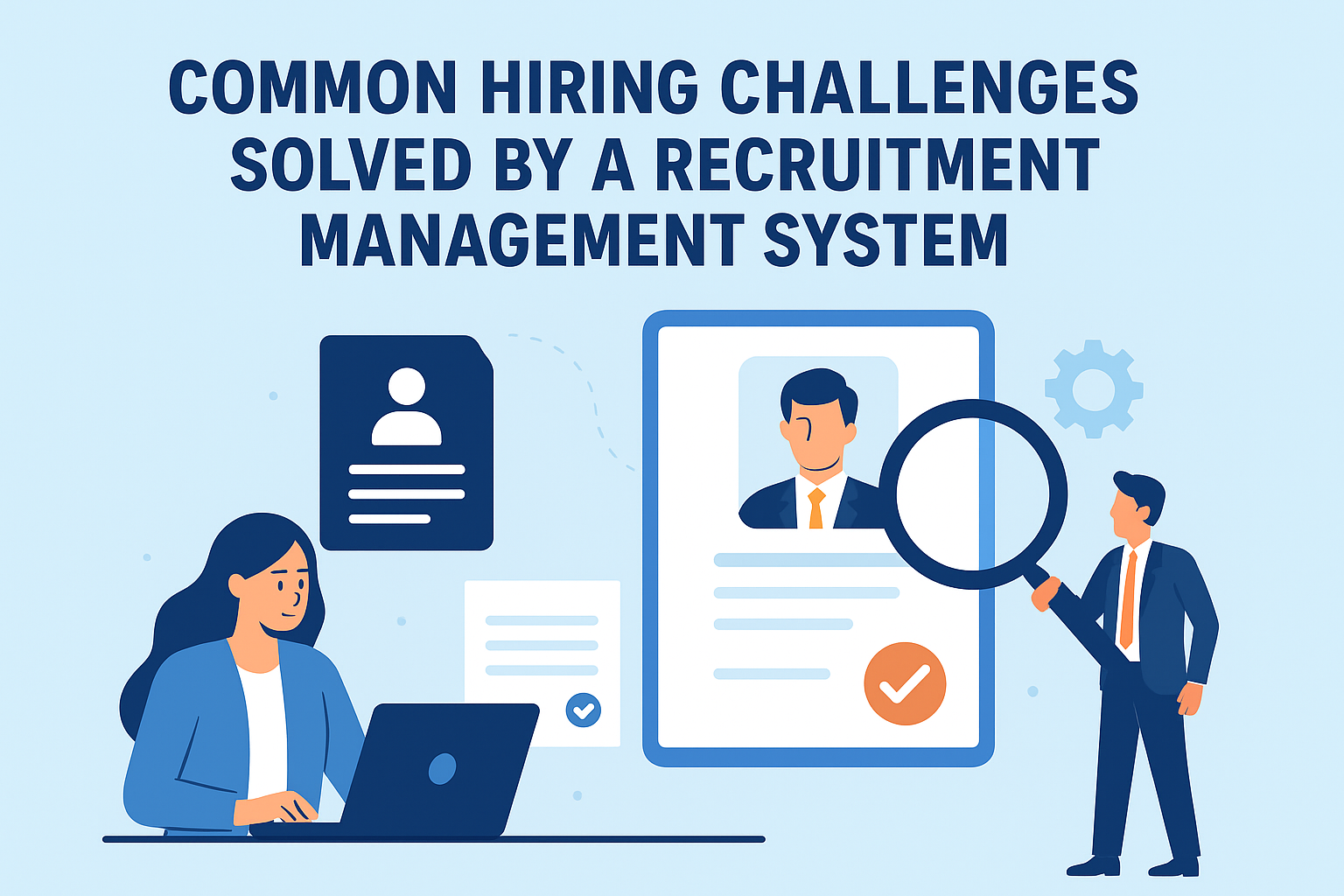Hiring the right talent is essential for business growth, but the process is often complex and time-consuming. HR teams deal with large applicant volumes, tight deadlines, and increasing competition for skilled professionals. A recruitment management system helps solve these challenges by simplifying and automating each stage of hiring, from sourcing to onboarding.

Managing High Volumes of Applications
Recruiters often receive hundreds of applications for a single job opening. Manually reviewing every resume is not practical and can lead to delays. A recruitment management system automatically filters applications based on skills, experience, and job criteria, helping HR teams identify the most suitable candidates quickly.
Slow and Inefficient Screening
Manual screening increases the risk of overlooking qualified candidates. Automated resume parsing, keyword matching, and AI-based filters speed up the screening process. This ensures that top candidates are identified early and do not slip through the cracks.
Poor Coordination Between HR and Hiring Managers
Communication gaps between HR teams and department managers can delay hiring decisions. A recruitment management system centralizes all candidate information and updates in real time. Both HR and hiring managers can collaborate more effectively with shared notes, evaluations, and approval workflows.
Difficulty Tracking Candidate Status
When teams use spreadsheets or emails, it becomes difficult to track where each candidate stands. A recruitment management system provides a clear pipeline view showing every stage—from application to selection. This transparency improves decision-making and reduces confusion.
Time-Consuming Interview Scheduling
Coordinating interview timings manually creates unnecessary delays. Automated scheduling tools help match availability between candidates and interviewers, send reminders, and reduce no-shows. This speeds up the interview process significantly.
Poor Candidate Experience
Slow responses, unclear communication, and long waiting times create a negative impression among candidates. A recruitment management system sends automated updates, acknowledgment emails, and reminders. The smooth application experience helps strengthen employer branding.
Inconsistent Evaluation Methods
Different interviewers often use different evaluation styles. This inconsistency makes it difficult to compare candidates fairly. A recruitment management system offers structured evaluation forms and standardized scorecards, ensuring that each candidate is assessed using the same criteria.
Delays in Decision-Making
Hiring delays occur when feedback is scattered across emails and chats. The system consolidates all interview notes, ratings, and recommendations in one place. Managers can review everything quickly and make faster hiring decisions.
Employer Branding Challenges
A streamlined and professional hiring process reflects positively on the company. From easy job applications to timely communication, the system helps create a strong employer brand that attracts better talent.
Maintaining Hiring Compliance
Compliance issues often arise due to unorganized documentation or inconsistent processes. A recruitment management system stores records securely, maintains candidate history, and ensures standardized hiring steps across the organization.
Lack of Hiring Analytics
Recruiters need insights to identify bottlenecks and improve their hiring strategy. The system provides analytics such as time-to-hire, source effectiveness, drop-off points, and recruiter performance. These insights help HR teams make better decisions.
Difficulty Building a Talent Pipeline
Without a structured system, companies must start hiring from scratch for every vacancy. A recruitment management system helps build talent pools by storing profiles of candidates who may be suitable for future roles. This reduces hiring time and supports proactive recruitment.
Conclusion
A recruitment management system helps eliminate the biggest hiring challenges by automating workflows, increasing collaboration, improving candidate experience, and enabling data-driven decisions. With a more efficient process and better visibility at every stage, organizations can hire faster, reduce costs, and attract stronger talent.
 Never miss a story from us, get weekly updates in your inbox.
Never miss a story from us, get weekly updates in your inbox.